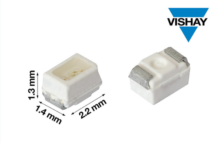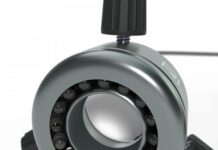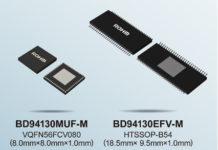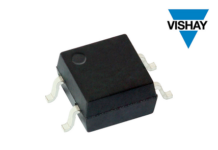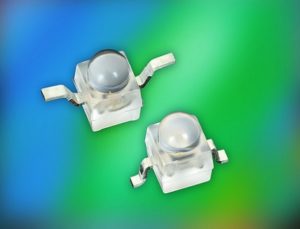
Vishay Intertechnology Releases Space-Saving Blue and True Green Ultrabright LEDs in Compact Packages With Dome Lenses
Featuring Latest InGaN / Sapphire Technology and Narrow Emission Angle of ± 9°, Devices Deliver High Luminous Intensity to 16 000 mcd Typical
The Optoelectronics group of Vishay Intertechnology has introduced a new series of blue and true green ultrabright LEDs in compact untinted surface-mount packages with dome lenses. Utilizing the latest advanced InGaN / sapphire chip technology and offering a narrow emission angle of ± 9° without the need for an external lens, the space-saving Vishay Semiconductors VLD.1232.. series delivers extremely high brightness with luminous intensity to 16,000 mcd typical.
With their high brightness and small 2.3 mm by 2.3 mm by 2.8 mm plastic cases, the LEDs released today are the perfect choice for reliable performance in a wide range of applications, including traffic signals and signs, interior and exterior lighting, and indicators and backlighting for audio and video equipment, LCD switches, and illuminated advertising.
Available in gullwing and reverse gullwing versions, the devices offer high luminous flux, withstand ESD voltages up to 2 kV in accordance with JESD22-A114-B, and are luminous- and color-categorized per packing unit. RoHS-compliant, halogen-free, and Vishay Green, VLD.1232.. series LEDs are compatible with reflow soldering processes per J-STD-020 and processable according to JEDEC Level 2a.
Device Specification Table:
|
Part # |
Color |
Luminous intensity |
@IF(mA) |
Wavelength typ. (nm) |
Forward voltage typ. (V) |
@IF(mA) |
|
VLDB1232.. |
Blue |
1800 to 7100 |
20 |
465 |
3.0 |
20 |
|
VLDTG1232.. |
True green |
7100 to 28 000 |
20 |
525 |
2.9 |
20 |
Samples and production quantities of the VLD.1232.. series are available now, with lead times of eight weeks.



